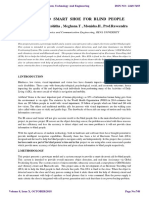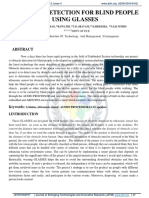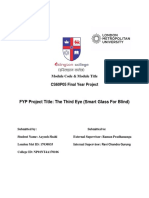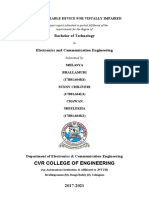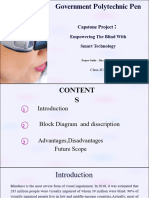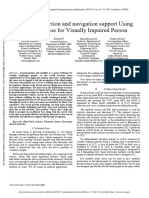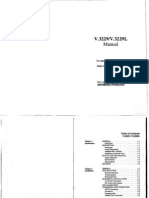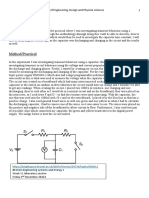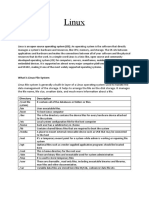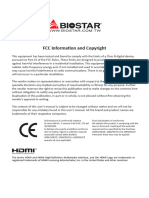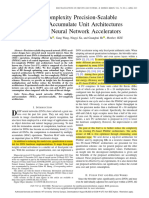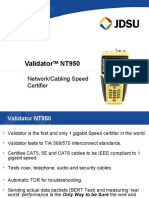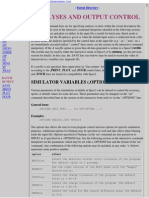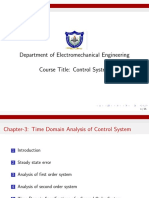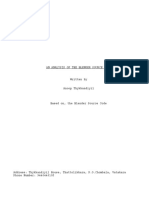0% found this document useful (0 votes)
60 views27 pagesSonicsight Report
The document presents a mini project report titled 'Sonic Sight - Glasses for Blind' aimed at developing a low-cost, user-friendly navigation aid for visually impaired individuals. The project utilizes ultrasonic sensors to detect obstacles and provide audio feedback to enhance mobility and independence. It includes acknowledgments, theoretical aspects, hardware components, and software tools necessary for the project's implementation.
Uploaded by
liblocksint02Copyright
© © All Rights Reserved
We take content rights seriously. If you suspect this is your content, claim it here.
Available Formats
Download as DOCX, PDF, TXT or read online on Scribd
0% found this document useful (0 votes)
60 views27 pagesSonicsight Report
The document presents a mini project report titled 'Sonic Sight - Glasses for Blind' aimed at developing a low-cost, user-friendly navigation aid for visually impaired individuals. The project utilizes ultrasonic sensors to detect obstacles and provide audio feedback to enhance mobility and independence. It includes acknowledgments, theoretical aspects, hardware components, and software tools necessary for the project's implementation.
Uploaded by
liblocksint02Copyright
© © All Rights Reserved
We take content rights seriously. If you suspect this is your content, claim it here.
Available Formats
Download as DOCX, PDF, TXT or read online on Scribd
/ 27







